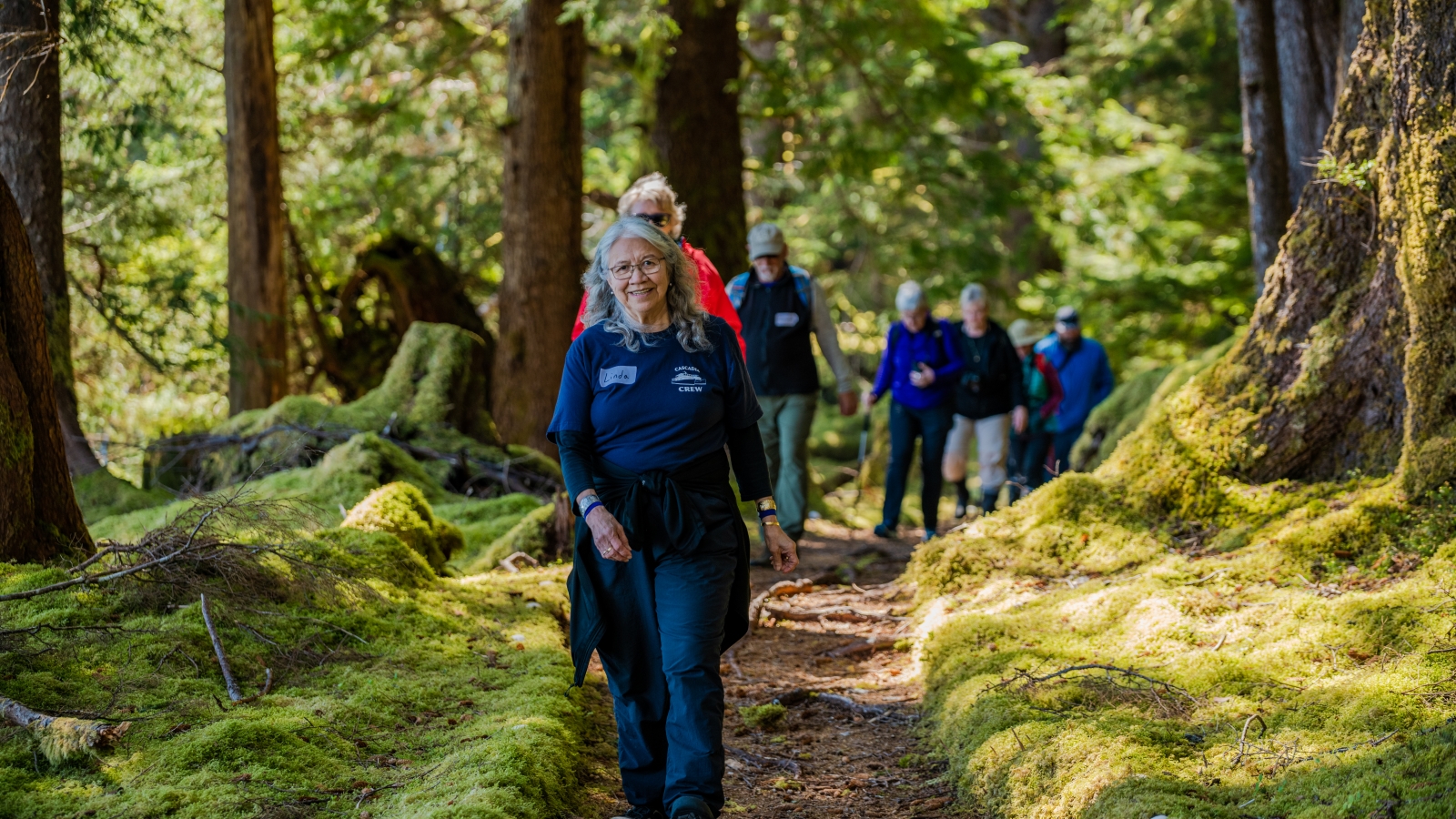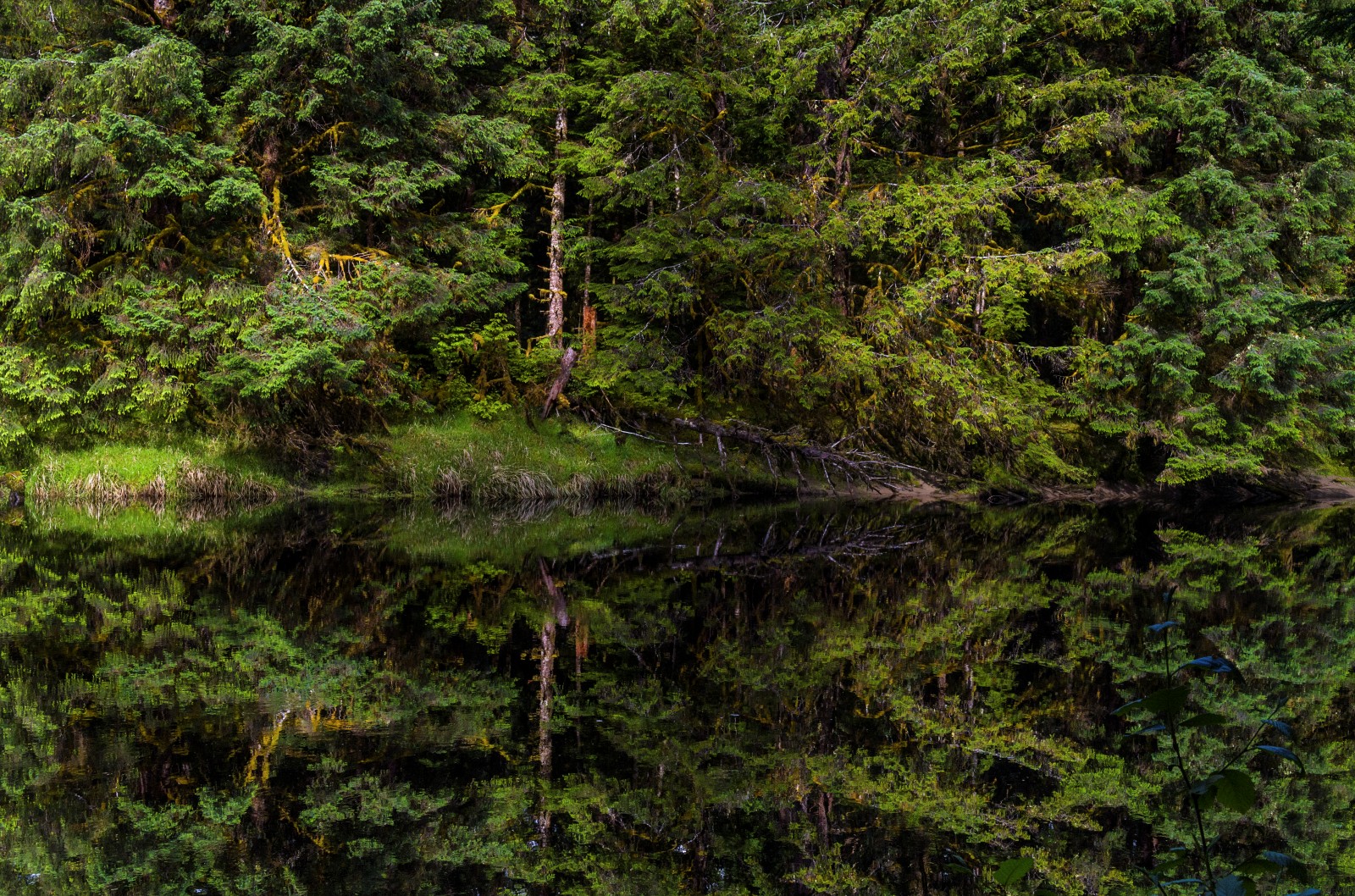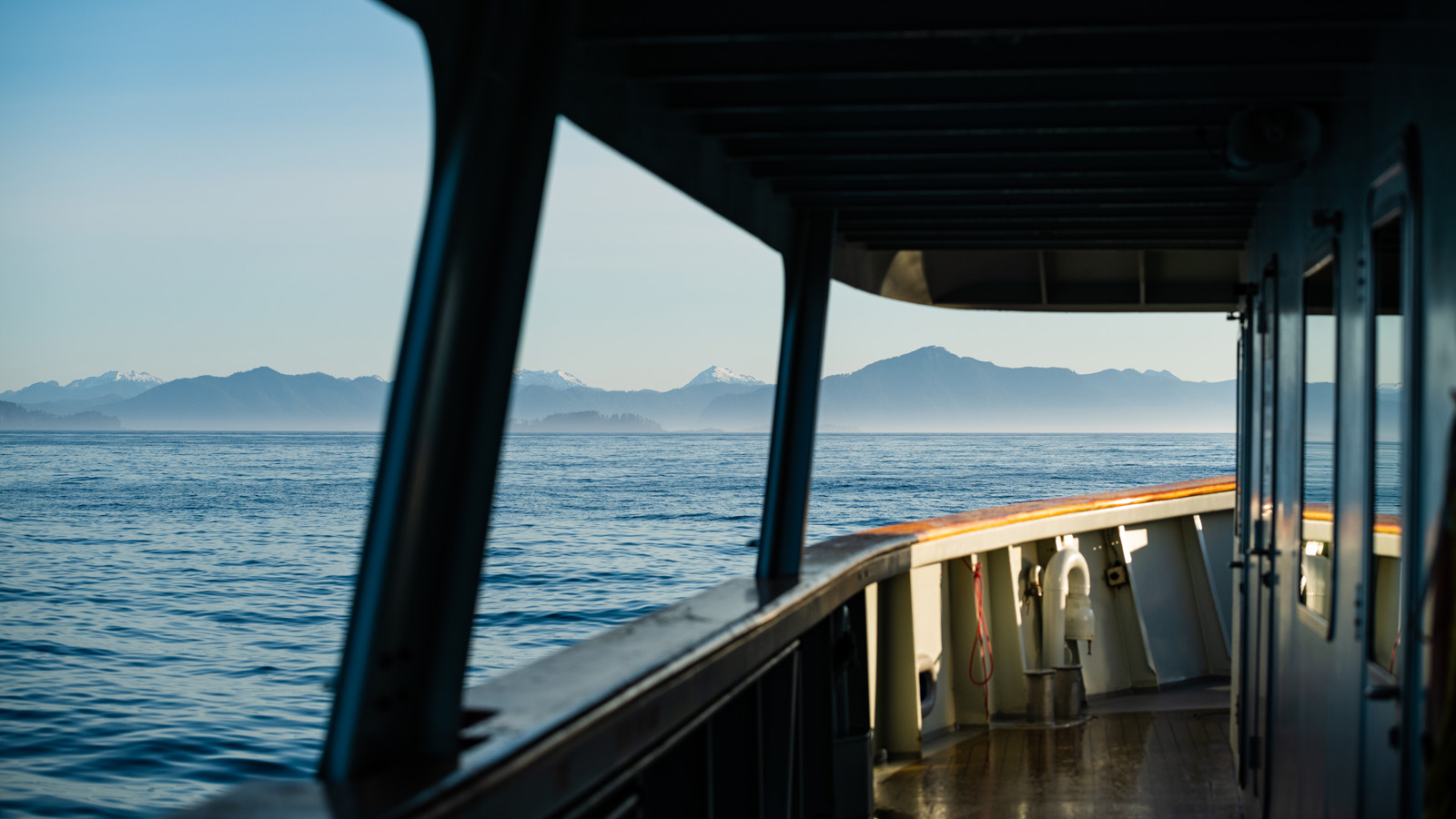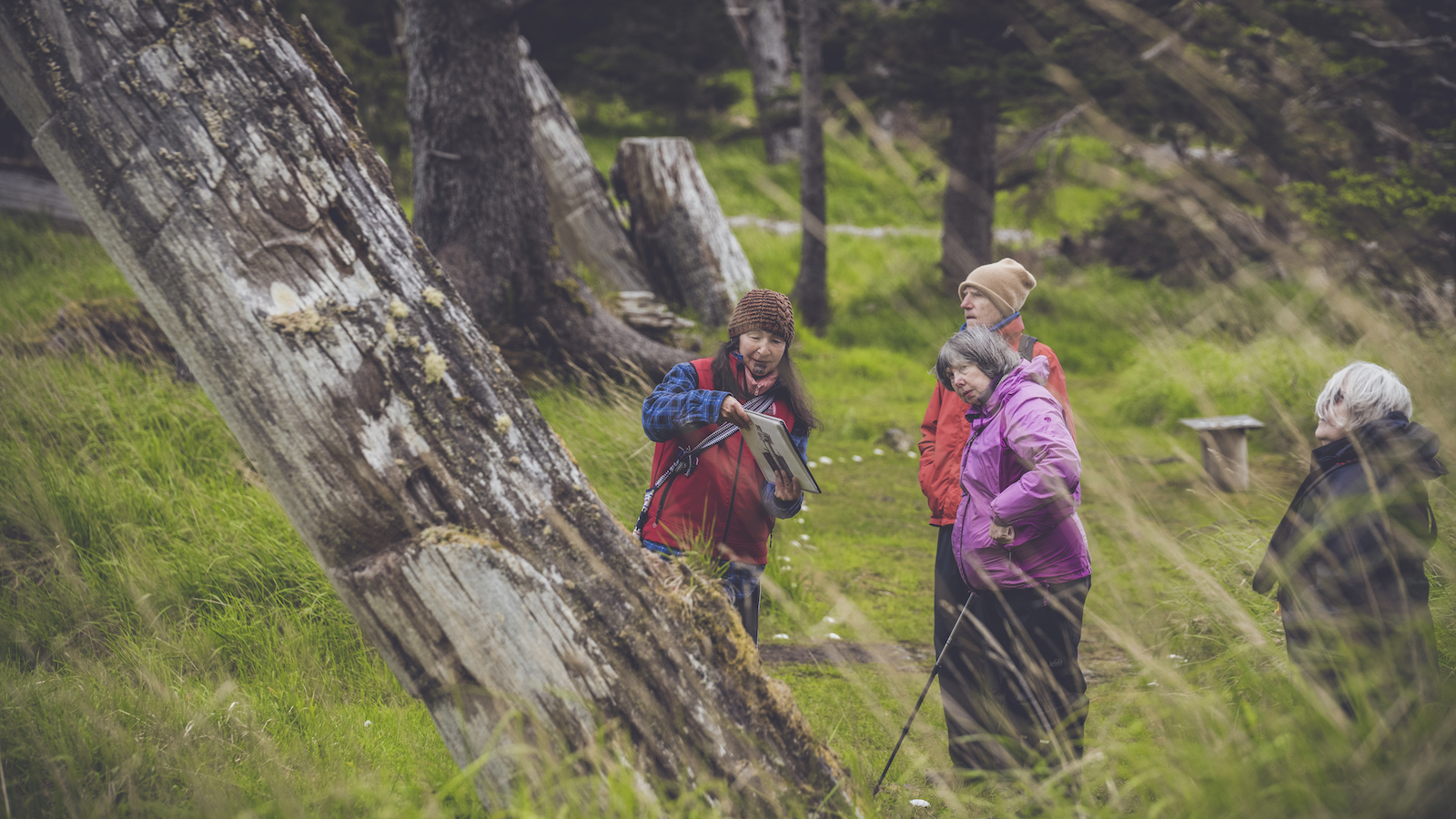For Lynne Freeman Haque, the dream of visiting Haida Gwaii began in high school when she watched a film portraying Haida Elders defending their land during the 1985 logging blockade. Her fascination with the fabled archipelago deepened during a stint at the Royal British Columbia Museum, where she became captivated by Haida material culture. However, it was only when Haque encountered Maple Leaf, the historic 92’ schooner operated by Maple Leaf Adventures, moored in Victoria’s Inner Harbour that her journey took shape. “The idea of exploring Haida Gwaii by wooden sailing ship just felt right,” she says, “so I started saving.”
The moment Haque realized she’d fulfilled her dream was while sailing along the islands on Hecate Strait in full sail. “It was sunny and gorgeous and one of the Haida watchmen called on the radio to say how amazing we looked.” But that was just the beginning. “I don’t think I’ve ever been anywhere so remote. It’s so wild and magical,” she recalls, “And you’re there with a small group and a great crew and eating this incredible fresh food…” Even getting to Haida Gwaii had been easier than Haque imagined; “Maple Leaf Adventures answered my questions before I even thought of them. I’d never done a trip like this, but they told me what to pack and how to get to the boat. They even suggested I buy a fishing license—and then the chef cooked the fish I caught for dinner!”

Embarking on a journey through Haida Gwaii aboard Maple Leaf is just one of the thoughtfully planned expedition cruise itineraries offered by locally-owned Maple Leaf Adventures. With three boutique vessels, including Maple Leaf, a 1904 sailing yacht with berths for eight guests; Swell, a lovingly restored 1912 coastal tugboat with cabins and ensuites for 12; and Cascadia, a luxury 24-passenger catamaran, each voyage is carefully tailored to both the destination and the unique style of the ship.
Operating exclusively in BC and Alaska, Kevin Smith, the company’s president, says that their dedication to immersive, zero-impact west coast experiences has been key in enabling Maple Leaf Adventures to establish deep local connections. These community relationships form the vital third element of the trips, complementing the stunning landscapes and distinctive vessels. “Not only are we welcomed into remote villages, but we invite local experts aboard the cruises—so you end up seeing the coast through the eyes of people who love it and call it home,” says Smith.
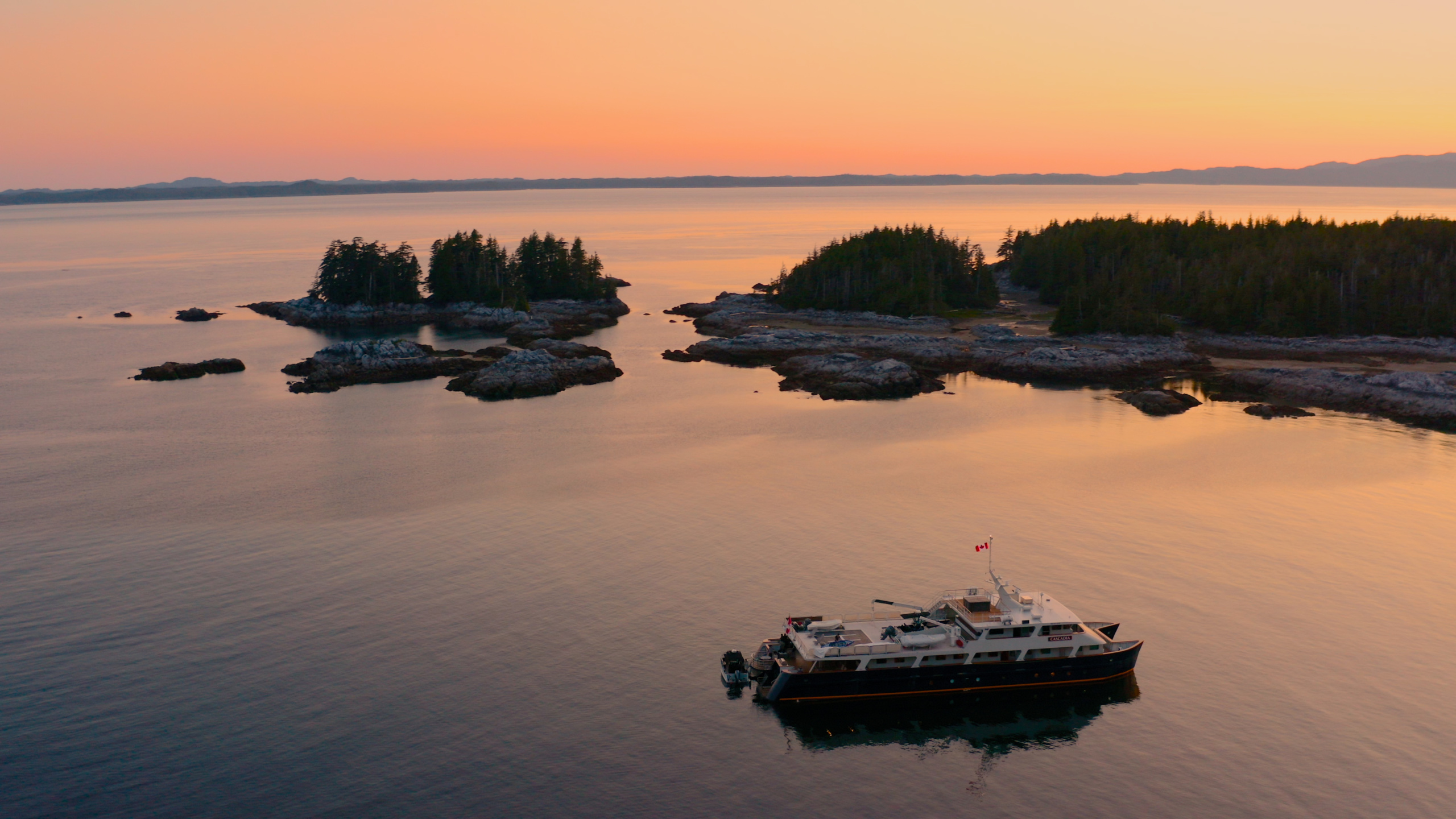
For Allen Clarke, who spent eight days exploring Haida Gwaii aboard Cascadia, having a Haida Elder named Gaajiiaawa Linda Tollas aboard his voyage was a once in a lifetime opportunity. As a Royal Canadian Geographical Society Fellow, Allen says hearing Linda’s stories when they visited the ancient villages or explored remote beaches made the landscape come alive for him. But what truly made her presence special happened during the quiet moments between shore visits, bear and whale sightings, and evening discussions, when Clarke says he was able to relate to the Haida Elder on a personal level, through shared conversations.
Another element that made Clarke’s trip stand out was the ship itself. Having been on trips with six other expedition cruise companies, he said Cascadia is “fabulous.” Not only does the vessel have a great crew, but it’s well-equipped (he especially appreciated the landing-craft style shore boats—which made it easy to go ashore on the rugged islands) and he was impressed with the excellent meals. Details, he says, that make Maple Leaf Adventures a company he’s recommended to several friends.
For Smith, who takes joy in showcasing the remarkable coastal beauty to visitors, this praise is something the company has worked hard for. His hope is not only for guests to go home feeling relaxed and rejuvenated after each exceptional trip, but for them to have developed a meaningful connection to the islands, inlets, cultures, and wildlife of the coast. “When people love something, they want to protect it,” he explains, a sentiment that aligns with what he says is Maple Leaf Adventure’s not-so-secret objective: “We are a conservation organization in the guise of a travel company. We want to leave this place better for future generations.”

Up close with Kevin Smith, president of Maple Leaf Adventures
Why did you start Maple Leaf Adventures?
As a backcountry and marine park ranger, I saw firsthand just how spectacular British Columbia’s coast is—and how vulnerable it is to unsustainable resource extraction. I wanted to prove there’s a higher and better use for the land. The chance came in 2001 when I was offered ownership of the schooner Maple Leaf. We’ve built on her rich history by creating luxury, world-class voyages that give guests the opportunity to visit remote islands, and experience the incredible wildlife and cultures of this coast.
Why is your relationship with local communities so important?
An Indigenous Elder once told me a story about how he was out fishing when an Alaskan cruise ship went by. As he listened to the commentary coming over the loudspeakers, he said the information they were sharing was completely wrong—and this hurt. So we decided our guests would hear the stories from the locals themselves: we hire cultural experts, visit small community museums and meet some of the coast’s most interesting people.
You call Maple Leaf Adventures an eco-tourism company, what does this mean to you?
This coast has been really good to us, so it’s important we care for it in a measurable and meaningful way. This goes beyond leaving no trace—we want to help make things better. Part of this was signing up with 1% for the Planet. I call it our eco-tax. 1% comes off the top, no matter what our year looks like, and this money gets channeled back into coastal conservation programs. Occasionally we’ve ended up sharing an anchorage with one of the groups we’ve helped fund. It’s pretty special when it comes full circle and we can invite them aboard to talk to the passengers about the work they do.
